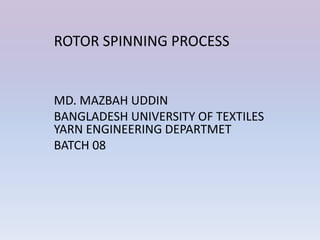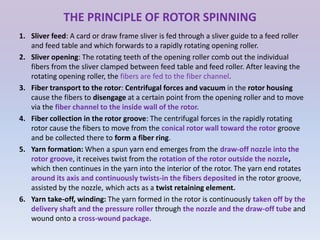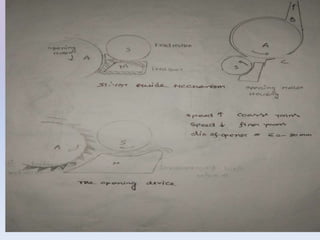This document discusses the rotor spinning process. It begins by describing the basic principle of open-end yarn formation and the different types of open-end spinning processes. It then provides details on the specific features, principles, and settings of rotor spinning machines. This includes descriptions of the feed, sliver opening, fiber transport, yarn formation, and winding processes. It discusses the raw material requirements and preparation for rotor spinning. Overall, the document provides a comprehensive overview of the rotor spinning process from fiber preparation through yarn formation and winding.




























































